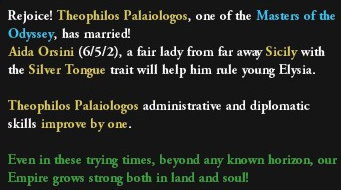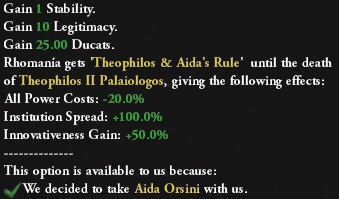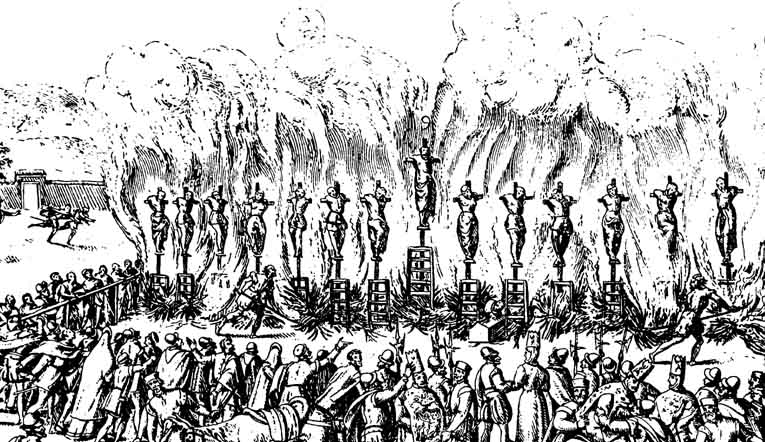Prologue: The City of the Worlds Desire (330 - 1444)
Constantinople, the Queen of Cities, had always been destined for great things. Sitting among the edge of both Europe and Asia, it would be founded to serve as the new capital of the Roman Empire by Constantine the Great, after whom the city was named, in 330AD. A bridge between the recently reunified Western and Eastern Roman Empires, it had originally been renamed Nova Roma prior to its renaming, serving to act as a symbolic center for the new period of Roman splendor as the mother city continued to decline in fortune. Barely seventy years after the death of its namesake, Rome would be sacked for the first time in eight hundred years.
As the West collapsed and fell into darkness, the Eastern Empire survived and preserved the light of Rome, inheriting the mantle and the torch for a dominion that had once ruled a vast majority of the known world. Constantinople would sit between two continents and two cities, and for centuries, it would sit as the largest and wealthiest city in all of Europe. It would become a capital of splendor and opulence, protected by impenetrable defenses that enclosed magnificent palaces and churches. It would flourish into one of the largest cities in the world. Constantine had intentionally built the city to rival that of the grandest city in all of antiquity, and through centuries of struggle and triumph, Constantinople would continue to hold the torch for nearly nine hundred years.
But it was not meant to last.
Multiple times during its long history, the light of Rome was threatened multiple times and almost snuffled out between the ambitions of various barbarian rulers and the many enemies that the Eastern Empire would make. In the seventh century, the Eastern Empire and Christendom as a whole would see its greatest enemy arrive from the deserts of Arabia, led by its newfound ‘prophet’ Muhammad. His followers had come close to extinguishing the light of Rome, alongside being threatened by various barbarian statelets and opportunistic rivals, as the emerging tide of Islam swept through the decaying Persians and most of Asia and Africa. From this point onwards, the Empire would struggle immensely to regain control of her eastern territories, suffering from strength to weakness in every conflict.
Despite brief periods of reemergence and restoration, the opulence of Constantinople would make the capital an extremely valuable target for those who sought to conquer it. Centuries of Roman splendor would be undone following the disaster of the overwhelmingly crushing defeat at the Battle of Manzikert, resulting in the loss of Anatolia to the Turks. As Constantinople remained the mind of the Empire, the Eastern Empire had lost its heart, and centuries of constant conflict between the Turks and the Greeks would bleed away whatever remained of its spirit.
A 15th-century depiction of the Sack of Constantinople during the Fourth Crusade, c.1204
Despite misfortune, a promising recovery among imperial fortunes would see Constantinople flourish once more. But the Empire would suffer a devastating blow not from its Muslim rivals, but from a terrible strike from Christendom itself, as Constantinople would be sacked by Latin Crusaders in 1204. Its devastation would leave the Empire far poorer, smaller, and ultimately less able to defend itself from the Turkish and Slavic conquests that followed. The Latins would take the city and hold it for decades after shattering the former Eastern Empire into several rump states, declaring their own Latin Empire. But the Latins and their church were never able to maintain their new state, and sixty years after its brutal sacking, Nicean emperor Michael VIII Palaiologos would reclaim Constantinople and restore the Eastern Empire once more from its last Latin ruler, Baldwin II.
As the Empire had lost much of its economic resources, it would never reclaim its wealth and splendor from ancient times. From the very moment that the Empire would be reunited, its new dynasty had its hands full the moment they ascended to the throne. The Turks of Anatolia would often attack imperial territory and strike the Empire hard while doing so, while the Palailogos were forced to fight alongside Slavic opportunists such as Bulgaria and Serbia, who had sought to build their own empires at the Empire’s expense. A loss of land in the east and to the west, followed by two devastating civil wars over a bitter fight to control the Imperial throne, would be further struck into chaos as the pandemic and pestilence of the Black Death would bring the Empire to its very knees. Constantinople frequently stood on the brink of destruction, and by the end of the 14th century, the internal and external strife had brought led the Empire to consist only of Constantinople itself and a few other isolated enclaves.
As centuries of splendor gave way to misery, the city endured by a thread. A Greek tragedy of the highest caliber had befallen the city, and any attempt at diplomatic or military successes that past and present Emperors had tried to fight for had ended in vain or petty squabble. Manuel II, who had succeeded in retaking some territory and held it until the end of his reign, had only prolonged the destruction of the Roman dream. Not even a fraction of what it once was, the fight for the survival of a dying empire and its legacy would continue to wear down Constantinople in chains.
Detail from The Middle King by Benozzo Gozzoli,1459–1461, widely believed to represent Ioannes VIII during the Council of Florence.
Manuel’s son and successor, Ioannes VIII, would spend his reign and dedicate his life to ensuring that the dream of Rome would not perish in vain. After spending so long and so much of his reign to preserve the Empire of his ancestors, the Emperor would become obsessed with finding even the faintest glimmer of hope. Surrounding himself in the comfort of ancient books, he sought the wisdom of wiser men who had ruled on the throne before him. Desire would transform into obsession, as the Emperor would surrender himself within the confines of the Imperial Library for multiple days at a time. Many of the advisors to the Emperor would begin to see increasingly erratic behavior from the Emperor in his search, as days started to persist into weeks.
In the late half of 1444, the Emperor would finally receive the answers he had been looking for. He didn't know it, but he was about to change the world
Last edited:
- 5
- 3









